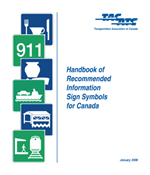Tac Manual Canada
The study guide is tightly connected to The Tangled Bank: An Introduction to Evolution, Second Edition, by Carl Zimmer. It includes a wide range of activities. The help study guide answers.
TAC’s Geometric Design Guide for Canadian Roads is a fundamental reference document for roadway design practitioners in Canada. The Guide has contributed to the consistent and safe development and expansion of regional, provincial, and national roadway and highway systems in Canada. 2017 Edition The Guide provides guidance to planners and designers in developing design solutions that meet the needs of a range of road users while addressing the context of policy decisions and the surrounding environment. Design guidelines are included for freeways, arterials, collectors, and local roads, in both urban and rural locations as well as for integrated bicyclist and pedestrian design. The Geometric Design Guide for Canadian Roads (2017) replaces the 1999 edition of the Guide and subsequent revisions, and contains updated design and human factors research and practices for roadway geometric design. Learning Opportunities A cross-Canada, two-day advanced seminar is being developed to educate practitioners about both the urban and rural design environments with an emphasis on the application of concepts such as flexible design, cost-effectiveness analysis, human factors considerations in roadway design, and quantitative road safety analysis in support of design decisions. Two experts and authors of the Guide will lead the seminars.
Tac Manual Canada
Overview and Order Information DESCRIPTION, ITEM CODE AND PRICE Package of all chapters (1 to 10) $575 member $749 regular $225 student (e-book only) Chapter 1 - Design Philosophy offers an introduction to the goal of design, its evolving approach and the design domain concept utilized throughout the guide; and provides benefit cost analysis, value engineering and design exceptions guidance. $59 member $75 regular $39 student (e-book only) Chapter 2 - Design Controls, Classification and Consistency discusses how design controls such as human factors, speed, design vehicles and sight lines influence geometric design; demonstrates how to classify links in a road network to provide a hierarchical and readily understood road system that appropriately serves different purposes; and outlines the principles of providing consistency in cross section, operating speed and driver workload.
Tac Manual Canada

$65 member $82 regular $39 student (e-book only) Chapter 3 - Alignment and Lane Configurations focuses on design procedures and domains associated with horizontal and vertical alignment, the coordination of these two design elements and related issues including cross slopes, lane widening, lane balance, lane continuity and specialized traffic lanes such as truck climbing lanes, passing lanes and truck escape ramps. $69 member $89 regular $39 student (e-book only) Chapter 4 - Cross Section Elements offers guidance on design procedures and domains related to cross sections and related elements including special purpose lanes, shoulders, medians, outer separations and boulevards, curb and gutter and drainage; and presents considerations for bridges and utility placement, snow storage and future widening, as well as typical cross sections. $65 member $82 regular $39 student (e-book only) Chapter 5 - Bicycle Integrated Design identifies examples on how to integrate the design of bicycle facilities holistically into the design of roadways to provide a balanced solution for all modes and road users; and provides guidance on bicycle and in-line skater design needs, types of bicycle facilities, a framework for the selection of an appropriate type of facility, and specific design elements.